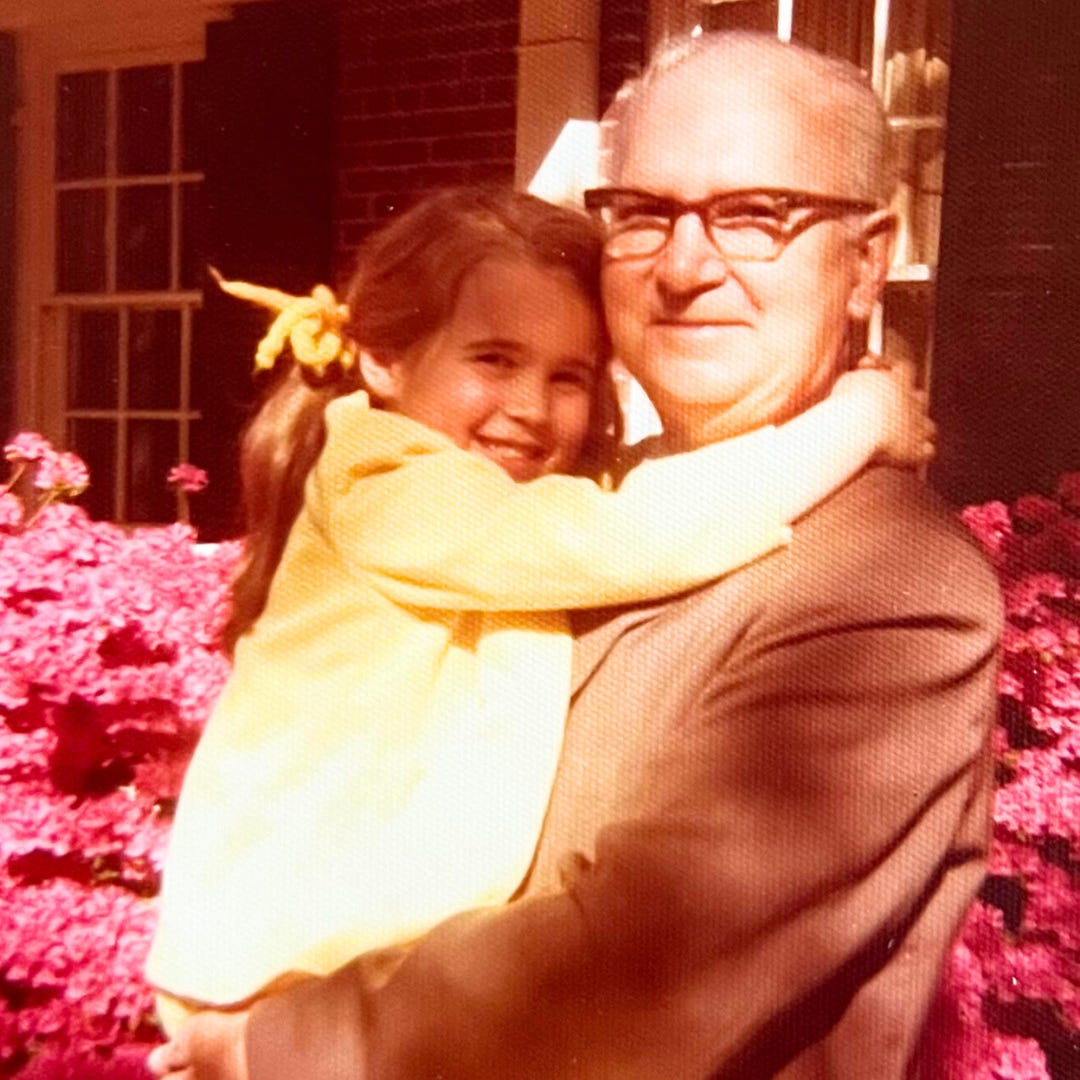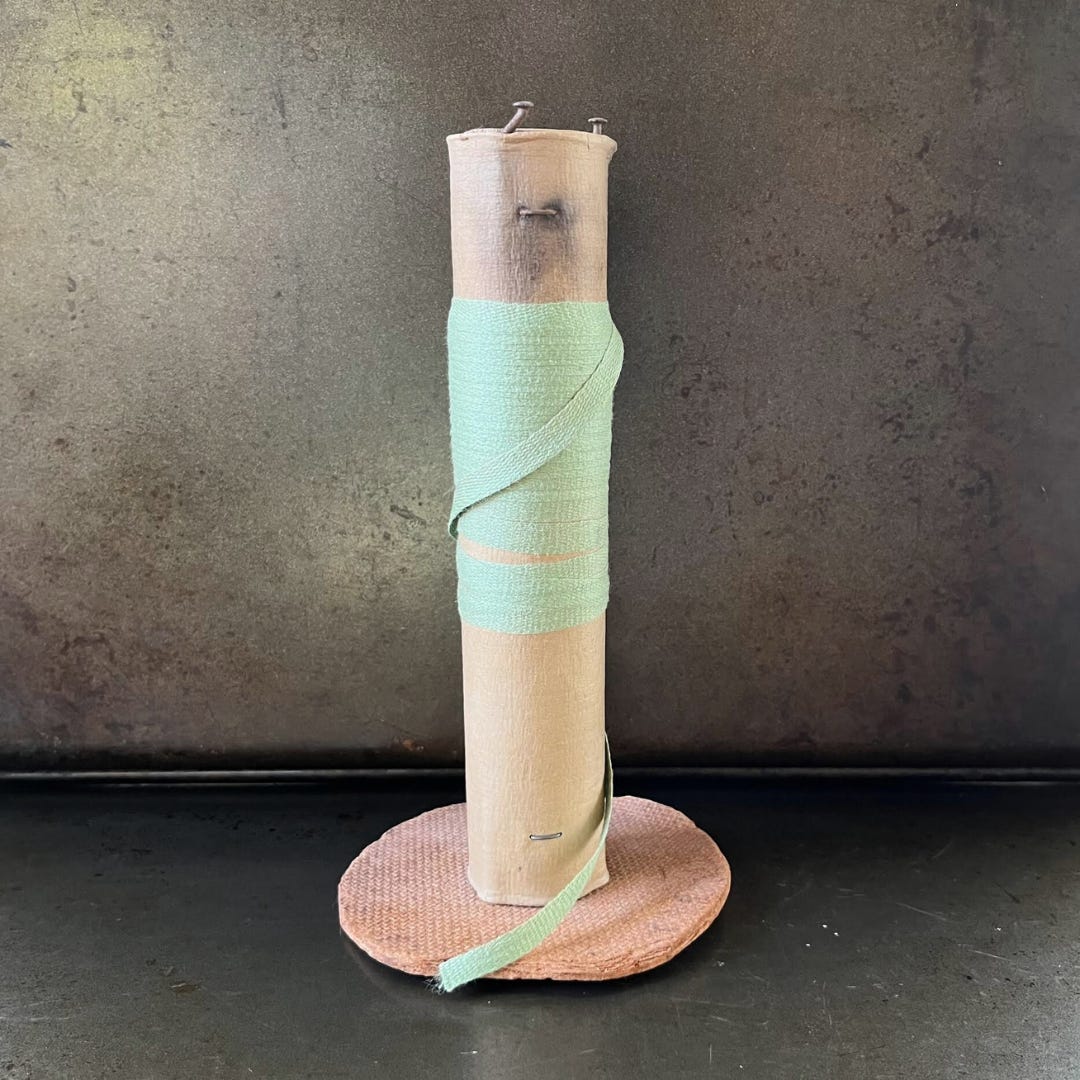THE GREEN CORD
“With his penknife, Deeda cut off lengths as needed for tasks throughout the house and garden….”
Until I was eight and we moved to our own apartment, my mother and I lived with my grandparents and great-aunt in their Baltimore row house. My father was battling alcohol addiction at the time, and my parents had separated. As a baby, I slept in a crib a few feet from my grandfather’s desk. In that diminutive room, Deeda, who’d worked as a bank teller for decades before retiring, tallied numbers for the family and for our church, where he was treasurer. Before he wrote, his hand hovered over the paper, the mechanical pencil spinning in cautious preparatory circles.
Two floors down, in the unfinished basement, was Deeda’s other work area. The shelves were lined with old glass jelly jars in which he stored nails and screws and other fasteners. Tools hung on pegboard. And in a corner of a low cabinet stood this eight-inch-tall spool of half-inch woven cotton cord, dyed the tart, fresh green of a tomato vine. With his penknife, Deeda cut off lengths as needed for tasks throughout the house and garden: binding stacks of newspapers for the trash truck, tying heavy chrysanthemum heads to stakes, and so on.
Though industrious, Deeda was never too busy to spend time with me. Toddler me liked to lie under the dining room table and look up at its underside, and he was always happy to join me there. When I was older, we played catch and practiced hitting baseballs in a nearby park. We mowed the lawn together, one of us helming the Black & Decker while the other kept the power cord away from the blades.
Deeda has been dead nearly 40 years now, but his spool of cotton cord is still with us. Time has faded the green from tomato-vine to cucumber-slice, and at this point there’s far more spool than cord, so it’s no surprise that my mother, who inherited it, uses it sparingly. What was a surprise: She recently told me that the cord dates back to the 1920s, when Deeda bought it for his seed and garden company. His what?
As it turns out, when Deeda graduated from high school, in 1922, his parents—German immigrants—offered him a choice: They could help him either go to college or launch a business. He opted to follow a passion and start a seed and garden company. But the company didn't survive the Great Depression, and he wound up having to find his way a different way.
By all accounts, he was a capable, reliable and well-liked bank teller. But I wish he’d gotten to live out his horticultural and entrepreneurial dreams. I can imagine him perched on a wooden stool far into his sixties and seventies, organizing neatly labeled glass jars of seeds while listening to the Orioles on the radio. Beyond creating our lovely front and back yards (the curving row of scarlet sage, the artful rock garden), he might have helped hundreds, even thousands, of beautiful gardens come to life. How valued and useful might his nursery venture have become?
Five years ago, I adopted a spiky houseplant a friend was ready to toss. Repotted, the plant doubled in height and girth, but eventually the stem grew dessicated and unsupportive. I cut off the top, dipped the remaining nub of stem in rooting hormone and placed it in a glass jar. For weeks, nothing. But then my mother gave me a tip she’d learned from my grandfather—that plants like to do their rooting in the dark. Sure enough, as Deeda once did, the plant found its way. It’s a comfort to know that if the green cord ever does run out, we’ll still have ties like this, woven not of cotton but of knowledge, memory and love.
—Elisabeth Dahl

Elisabeth Dahl's writing has been published at NPR.org and in The Rumpus, Post Road, Necessary Fiction and elsewhere. She’s the author-illustrator of the middle-grade novel Genie Wishes (Abrams) and lives and works in Baltimore.
For a different reading experience, The Keepthings’ stories can also be read in their entirety on Instagram @TheKeepthings.
Have a story to share? Please see the complete submission guidelines, including photo guidelines, at TheKeepthings.com.






I love the colorful horticulture allusions:
tomato-vine, cucumber-slice, sage green. Nicely done!
It’s amazing how the most ordinary of objects can illicit the richest memories and connections. I love the photo of you and your grandfather (him in his tie), lying under the dining room table together. Wonderful story!